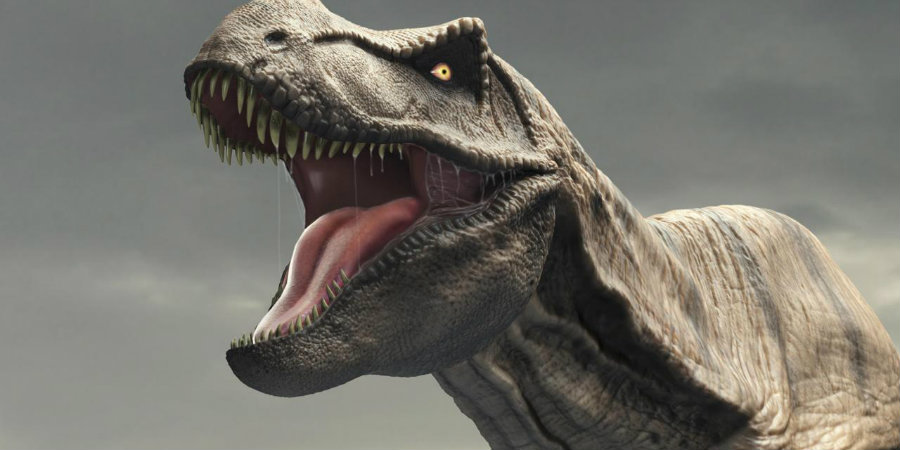A new study found the Tyrannosaurus Rex was not as fast as scientists thought, as the dinosaur walked rather than run. A group of researchers at the University of Manchester found the T. Rex was too big to run or even to outrun a fast human.
The team worked out the T. Rex’s maximum speed and found it was only about 16.5 miles per hour (26.5 kilometers per hour). That means the ferocious dinosaur was only one mile per hour faster than the average human.

According to the authors, larger animals take longer to accelerate, while smaller ones can do it faster, thus causing the T. Rex to classify as a slow dinosaur. The new findings were published Thursday in the PeerJ Journal.
Tyrannosaurus Rex was only one mph faster than the average human
The authors noted if a Tyrannosaurus Rex had tried to sprint, its legs would have snapped under the massive weight of its body.
“T. Rex is everyone’s favorite dinosaur, and paleontologists have been arguing for years about how fast it could run because this would tell us something about its hunting style and the way it caught its prey,” said Prof. William Sellers, one of the authors of the new study, according to BBC.
Sellers explained that in the project, they used a highly realistic computer simulation to predict how T. Rex moved, and such prediction showed that running would have been impossible because the dinosaur’s skeleton just wasn’t strong enough. To the researchers, it meant that T. Rex was actually slow “and therefore not a pursuit predator.”

Prof. Sellers, who is part of the School of Earth and Environmental Sciences at the University of Manchester, added the models used in the project are currently the most anatomically complete reconstructions ever to be attempted.
Large animals run out of energy supplied by the muscles before they are even able to reach their theoretically possible maximum speed. This occurs because the acceleration part requires muscles to function anaerobically, which means without oxygen and during which only limited reserves of energy are available.
However, small or medium animals, such as the cheetah, can accelerate quickly and have enough time to reach their maximum speed. The cheetah is the fastest animal alive, followed by the American antelope, the springbok gazelle, the wildebeest, and the lion.
A second study found larger animals are slower than small or medium ones
Another recent study by scientists at the German Center for Integrative Biodiversity Research in Leipzig found that animals have limited time to reach their theoretical maximum speed. A group of researchers studied almost 500 species and discovered their limited times occurs due to the acceleration coming from working for short periods of time anaerobically, without oxygen. So, animals can only spend so much energy without oxygen for limited periods of time.
That study was published Monday in Nature, seems to coincide with the new study’s findings.
“Put simply, small to intermediately sized animals accelerate quickly and have enough time to reach their theoretical maximum speed, whereas large animals are limited in acceleration time and run out of readily mobilizable energy before being able to reach their theoretically possible maximum,” said the researchers.
The speed of dinosaurs has been debated and theorized for decades. Some paleontologists estimate the T. Rex could reach as much as 45 miles per hour (72 kilometers) while others said its speed was more paced, at about 11 miles per hour (17.5 kilometers).
Zoologist Dr. Myriam Hirt, who led the second study, said she developed a unique formula that combined body mass, power and time needed for acceleration, and such formula also found the T. Rex was slower than previously thought. With its 16.5 mph acceleration, the T. Rex was more than twice as slow as the smaller Velociraptor, which could speed up to 34 miles per hour (55 kilometers).
“This is consistent with theories claiming Tyrannosaurus was very likely to have been a slow runner,” said Hirt, according to Daily Mail.
Tyrannosaurus Rex got slower as it grew up
Prof. Sellers told BBC that based on what the study gathered, they can basically say that running was very unlikely in any of the big predatory dinosaurs, but it doesn’t mean the smaller ones were not fast.
For him, the results mean that as it grew up, T. Rex would get larger and slower, thus changing its hunting behavior. Sellers added the findings help “fill out the picture” of what life was like in the Cretaceous period, in which dinosaurs still had large populations.
The researchers cautioned their findings to improve on those previously obtained by biomechanical work by excluding some of the already plausible values, and therefore reducing the range of uncertainty, but some previous findings still apply to the study of the T. Rex’s speed.
Source: Daily Mail
